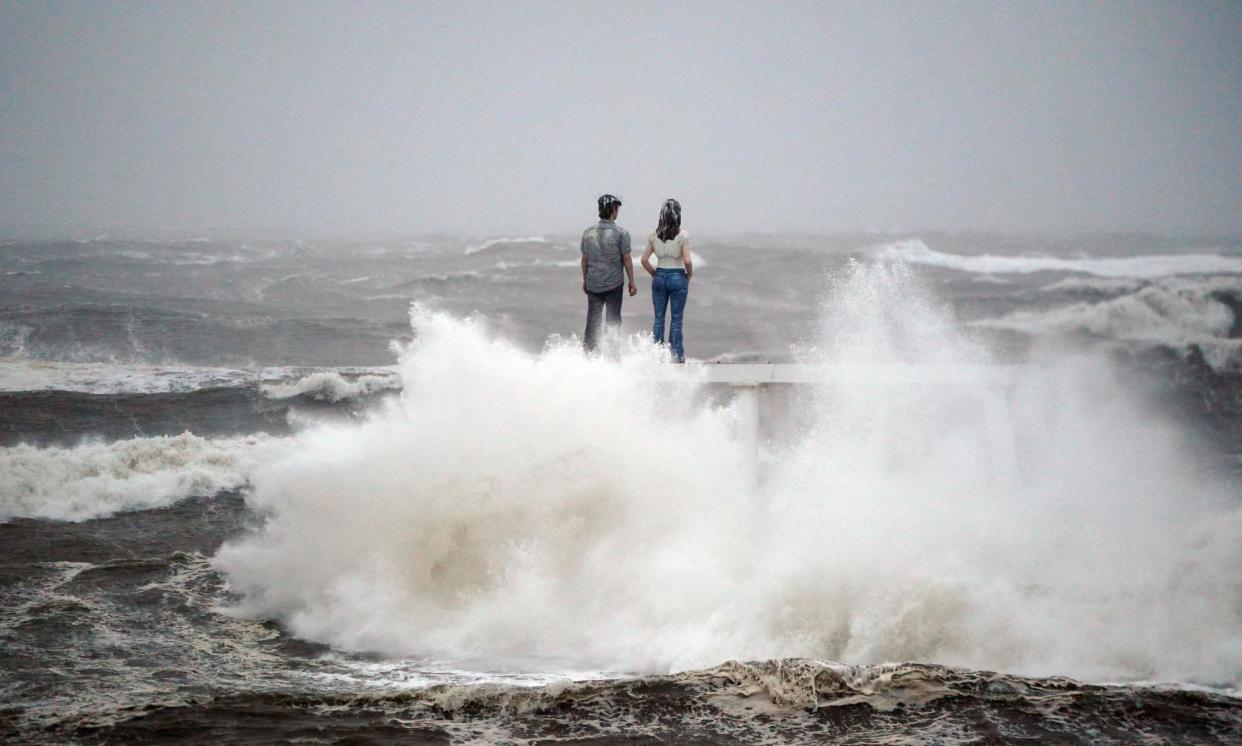‘Eye-wounding erection’: UK public art that is loved or hated

It was described by one council planner as “possibly the poorest quality work” ever submitted and has attracted so much controversy that no artist has admitted to making it. But the outside a Cambridge office block, which is to be taken down years after it appeared, is not alone as a work of divisive public art.
Here we take a look at other sculptures and installations that have split opinion:
The Meeting Place
Paul Day’s 9m tall bronze statue of a couple embracing in St Pancras International railway station, known by some as “The Lovers statue”, is often the first thing you see when you step off the Eurostar.
But, like public displays of affection, this artwork has not always been warmly received. The artist Antony Gormley said it was “a very good example of the crap out there” while the artistic director at the Royal Academy of Arts, Tim Marlow, said it was a “terrible, schmaltzy, sentimental piece of kitsch”.
However, Lonely Planet listed St Pancras under The World’s Most Romantic Spots, citing the statue as a key reason.
The Tree of Life
The six-metre iron sculpture of a dead tree outraged many residents of Kirkby, Merseyside, when it was “planted” as part of a £320,000 revamp of the town centre.
Designed by the artist Geoff Wood, some residents likened the sculpture to a giant twiglet. Many took umbrage with its cost, believed to be about £60,000 at a time when public services were struggling.
ArcelorMittal Orbit
The Orbit at 114.5-metres is Britain’s largest piece of public art. Found in the Queen Elizabeth Olympic Park in east London, it was constructed to mark London’s hosting of the 2012 Summer Olympic and Paralympic Games.
Designed by the Turner-Prize winning artist Anish Kapoor, the sculpture received a mixed reception. In October 2012, it was nominated and made the Building Design magazine shortlist for the Carbuncle Cup – an award for the worst British building completed in the past year.
Couple
Completed in 2007 in Newbiggin-by-the-Sea, the installation by Sean Henry shows two substantial figures of a man and woman in clothing, facing out to sea, standing on a large-scale tapered platform structure.
The Times’ chief art critic called the statue “a visually obnoxious pair of painted bronze lovers”, while the Guardian’s Jonathan Jones said it was the “stupidest sculpture of the past 20 years” and an “eye-wounding erection”.
Coverage in the Chronicle Live suggested the community was coming round to the sculpture, with residents saying the town was largely split down the middle. A poll on the news website showed 52% found it beautiful, while 48% found it stupid.
Apollo Pavilion
Designed by the British artist and architect Victor Pasmore, the Apollo Pavilion was completed in 1969 in Peterlee, County Durham.
Made of large geometric planes of white reinforced concrete, it immediately met complaints and campaigns, and later started to decay when the body that funded the sculpture was disbanded and the local council refused to intervene.
However, it did have its supporters and ultimately, despite conflicting campaigns, it was restored and awarded Grade II-listed status in 2011.
The Hare and the Minotaur
Designed by the Gloucestershire-based artist Sophie Ryder, the giant sculpture of the mythical minotaur and a hare has been dividing the residents of the regency spa town of Cheltenham since it was put on display on thepromenade in the late 90s.
The bone of contention has always been the minotaur’s huge penis, which is on full display as the creature sits atop an oversized bench. Because of the scale of the sculpture, the penis, about the size of a decent swiss roll, is at eyeline height for most.
However, the statue has endured and was swiftly returned to its place after a brief period of restoration in 2017.


